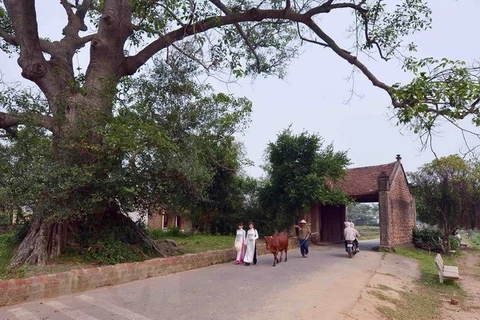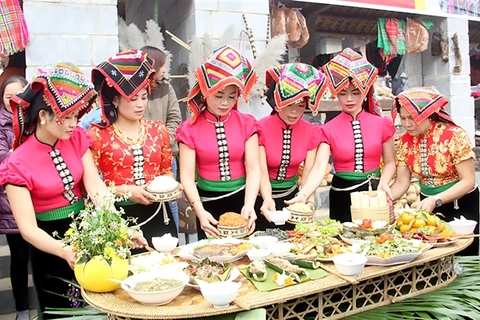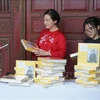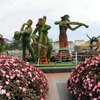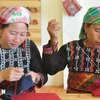Hanoi (VNA) – Every year on the 13th day of the first lunar month, La Phu village, Hoai Duc district, Hanoi holds a pig procession festival to worship its tutelary deity, Tam Lang.
Tam Lang was a talented general under the reign of Hung Due Vuong, the 18th Hung King, who ruled the country between 408 and 258 BC. He fought off all enemies to bring peace to the nation.
La Phu village was chosen by General Tam Lang as a troop station.
Legend has it that whenever General Tam Lang set out to fight the enemy, he ordered his servants to slaughter pigs and cook sticky rice to feed his troops. Villagers also offered pigs to the general and his troops on these occasions.
He died at midnight on the 13th day of the first lunar month. La Phu villagers organised a pig procession festival to commemorate the death anniversary of the general.
The selection and breeding of pigs is a rigorous process and the pigs to be sacrificed are chosen carefully.
At the beginning of each year, each hamlet in the village chooses one family to raise pigs for the festival. The family should have good virtue and have both boys and girls. Their descendants should be successful, and the family must have no death in the previous year.
Every February the selection of pigs begins. They should be well-proportioned, good-looking and weigh about 30kg. The cost of raising pigs is shared by local residents.
The pigs are fed on a special diet that includes eggs, glutinous rice porridge and fresh vegetables. They are bathed daily. Villagers even use fans and mosquito nets to keep pigs healthy.
Pigs are respectably called "Mr. Pig". If a "Mr. Pig" gets sick, the raiser must bring offerings to the communal house to pray for him to get better soon.
A pig weighs about 300kg when the festival is held.
The offered pig is put into a palanquin and decorated with paper flowers on the head, ears, snout, and tail.
At 6pm on the 13th day of the Lunar New Year, the "pigs" and other offerings are paraded.
According to village custom, hamlets nearest the communal house parade first.
The offering includes a palanquin of a pig, a palanquin of steamed sticky rice, and a palanquin of flowers and fruits. A lion dance troop and a trumpet team lead the procession from the host’s house to the village communal house.
The palanquin of the pig is carried by selected young men in the village.
According to villagers, if the pigs sacrificed are good looking and with healthy skin, they will enjoy favourable conditions when doing business and vice versa. Thus, it is necessary for them to be careful in all stages. Pigs that are big and well-decorated will win the village’s award.
At midnight, the village elders begin a ritual that will last until 2am the next day. After the ceremony, the pork is divided among the families of the hamlets for good luck./.


